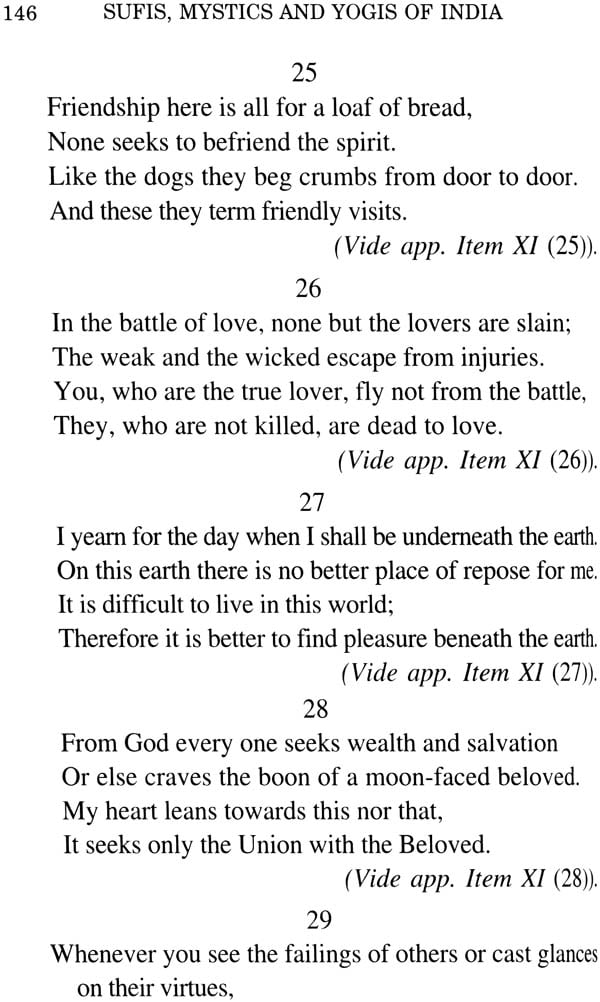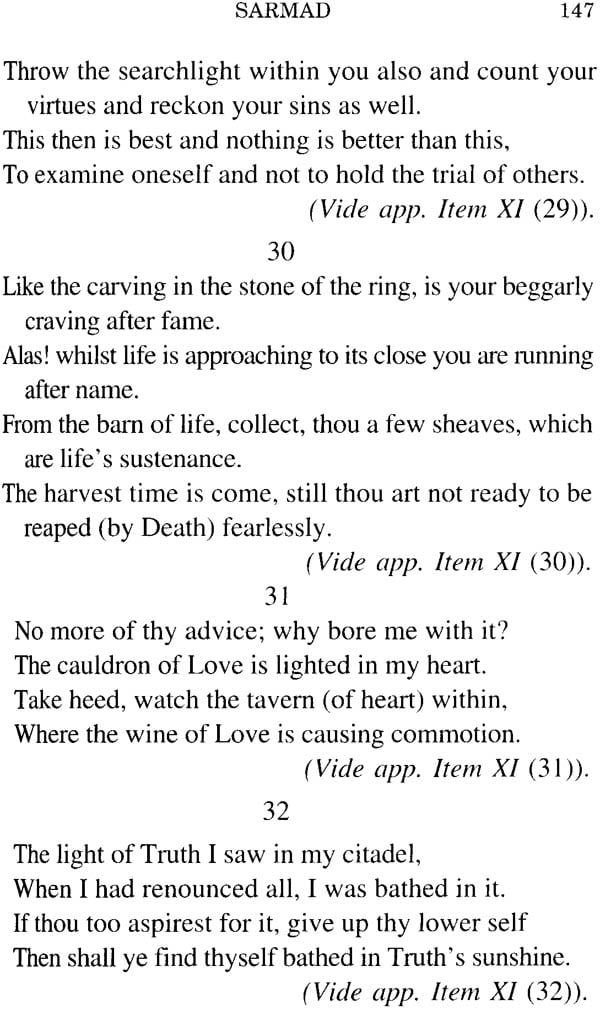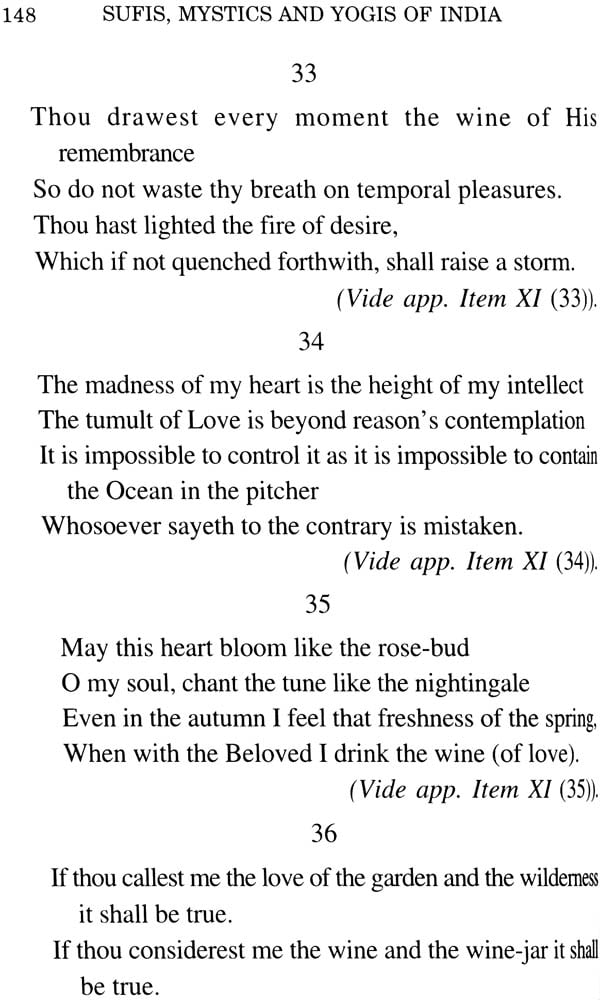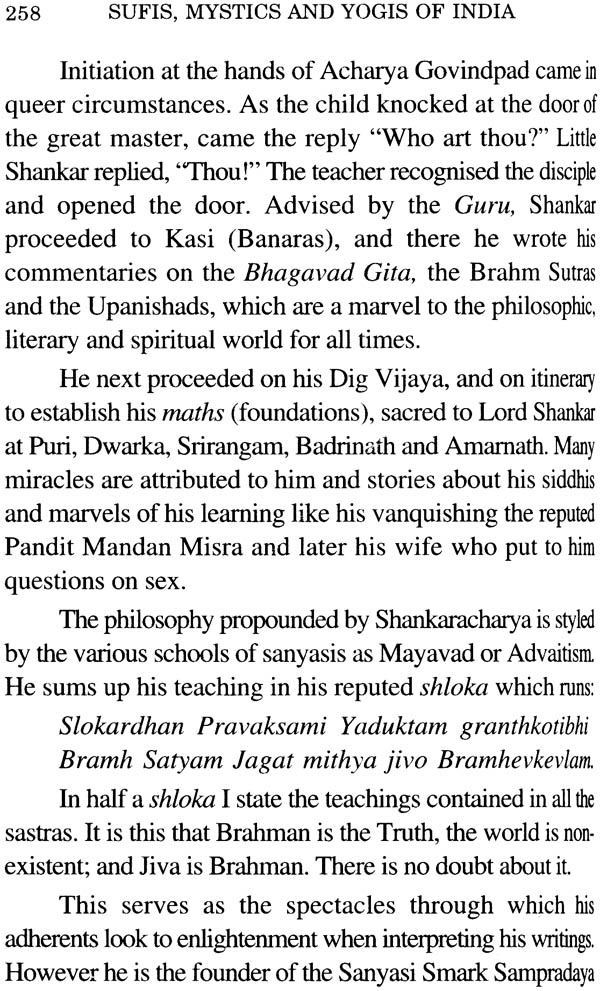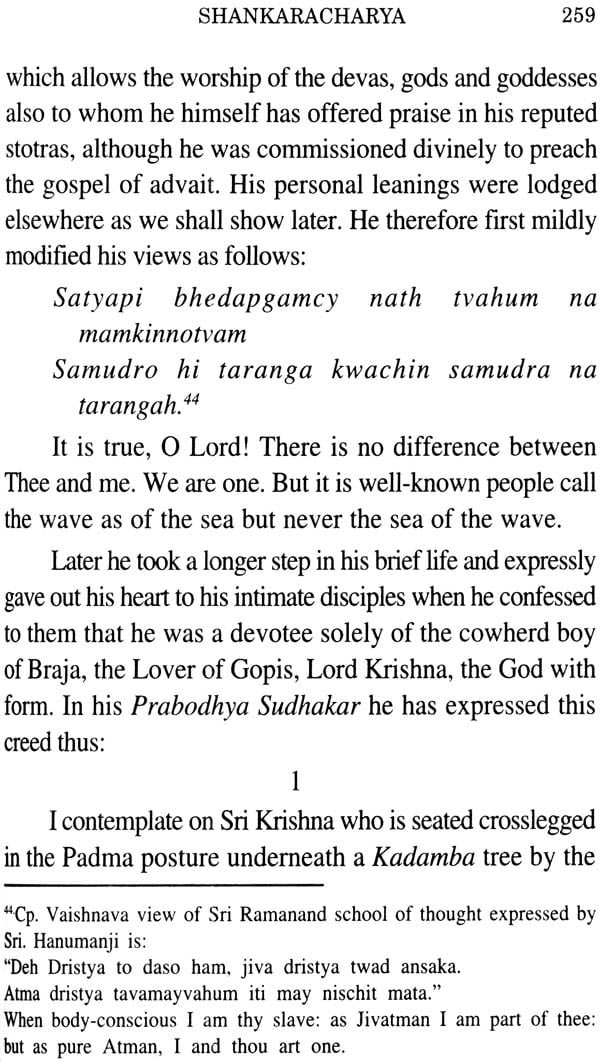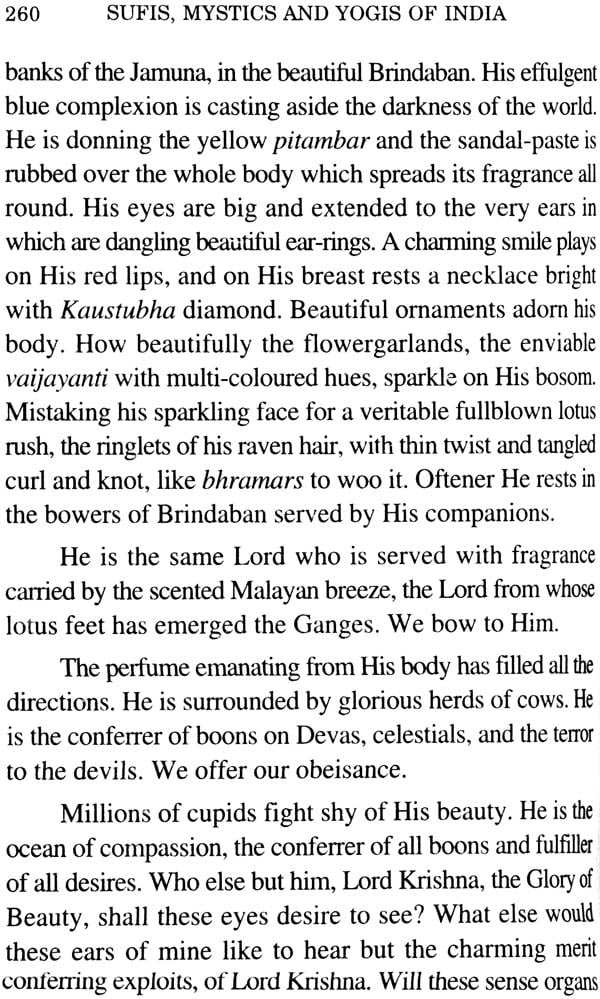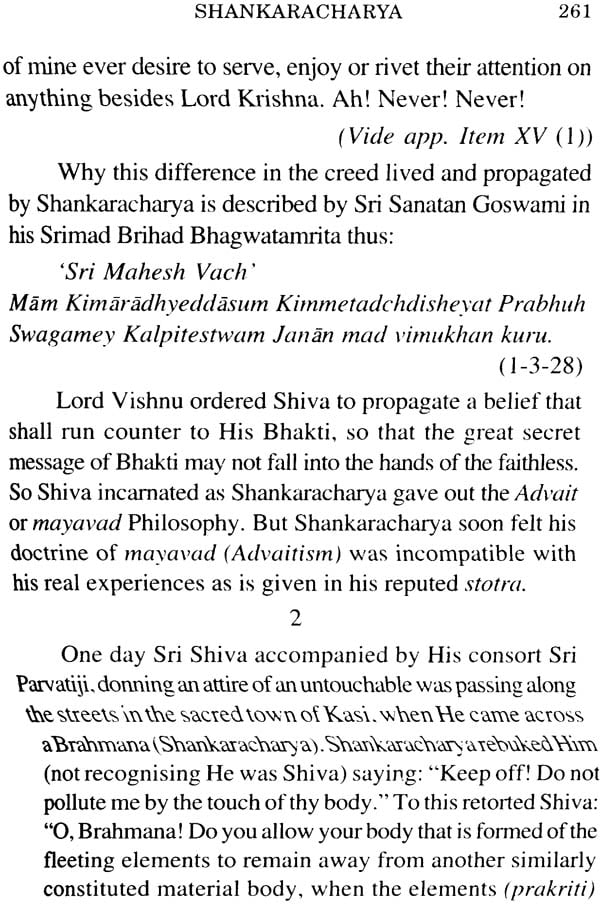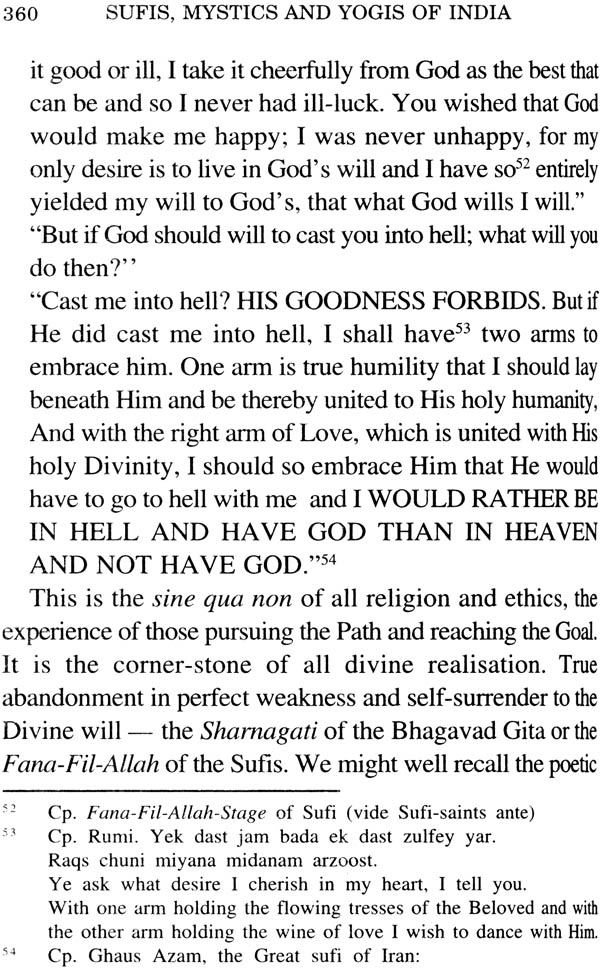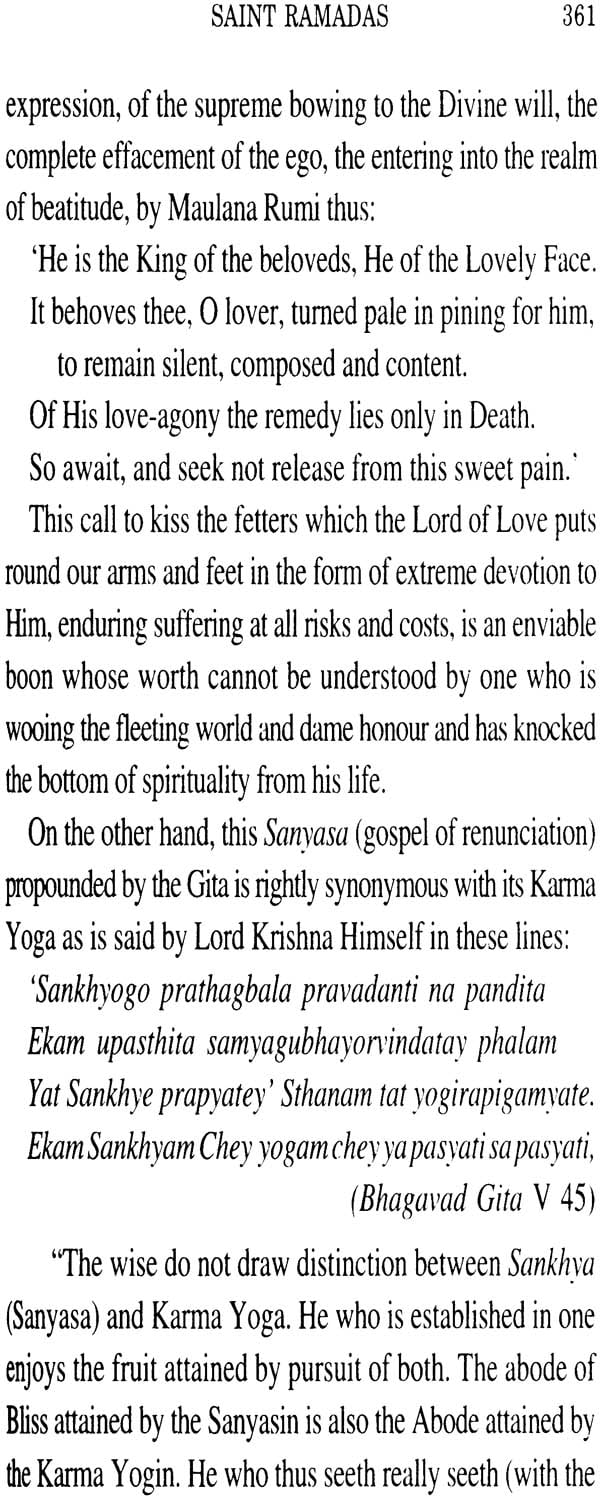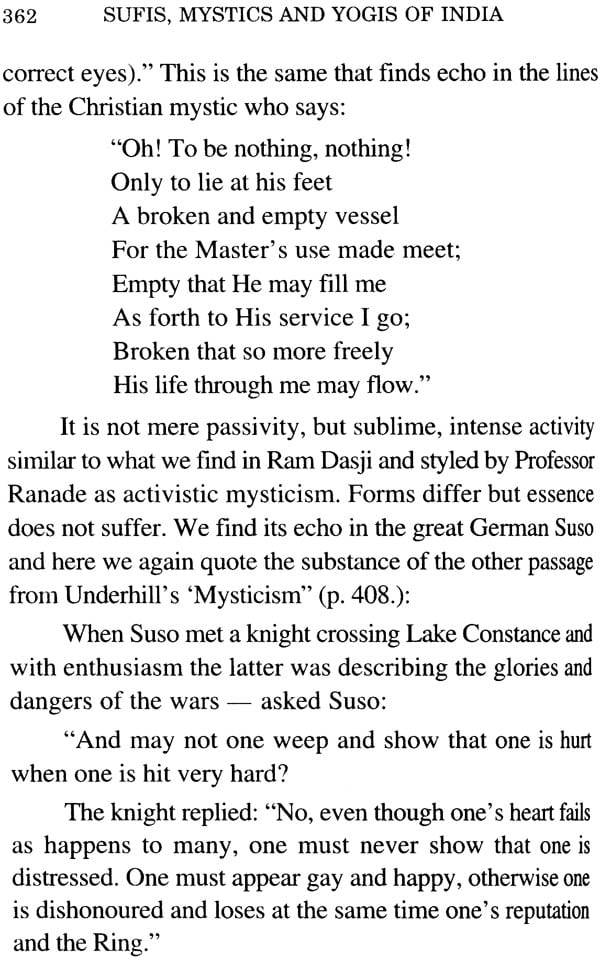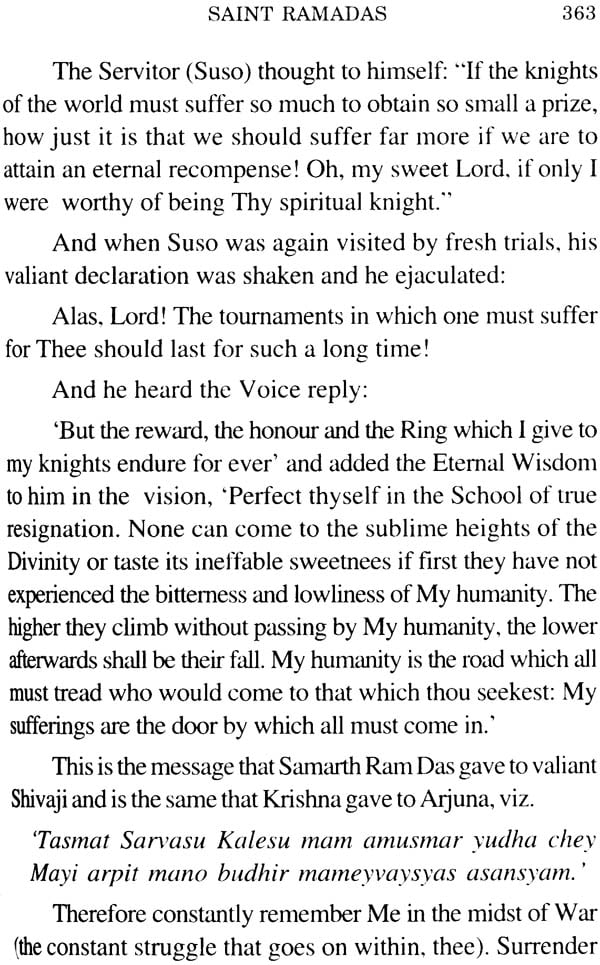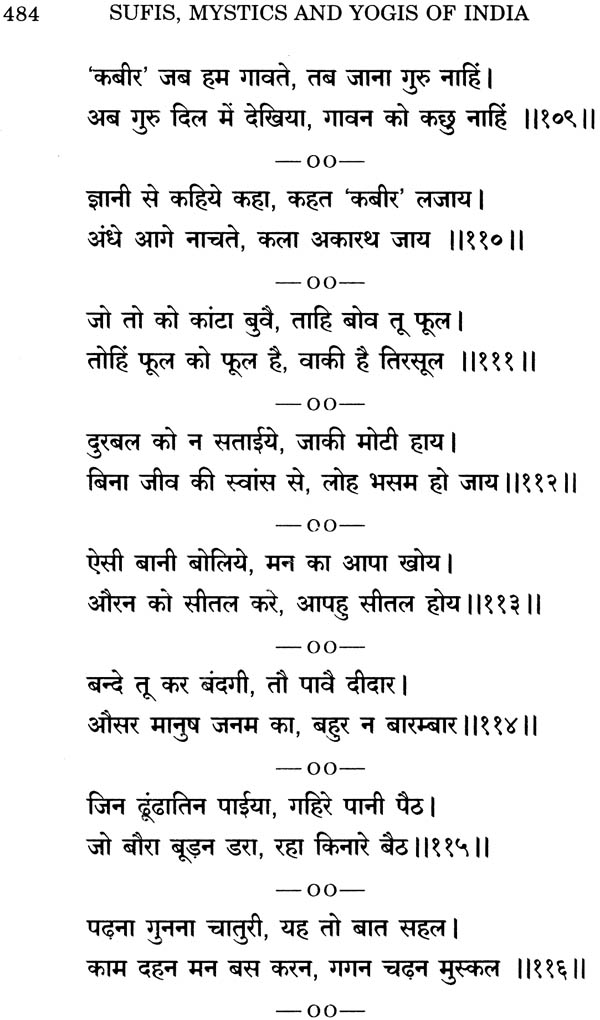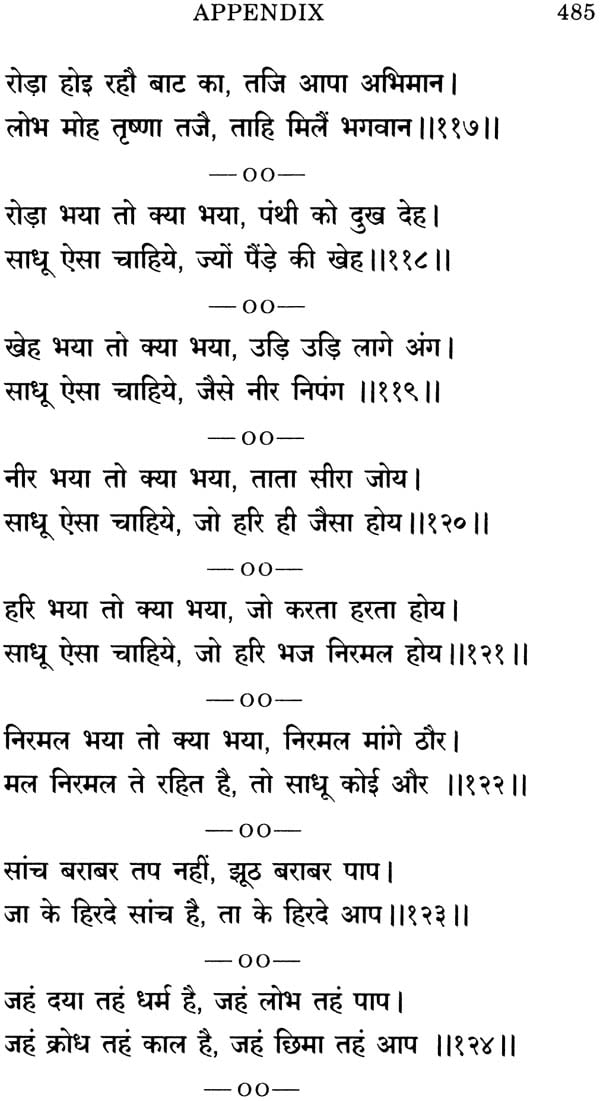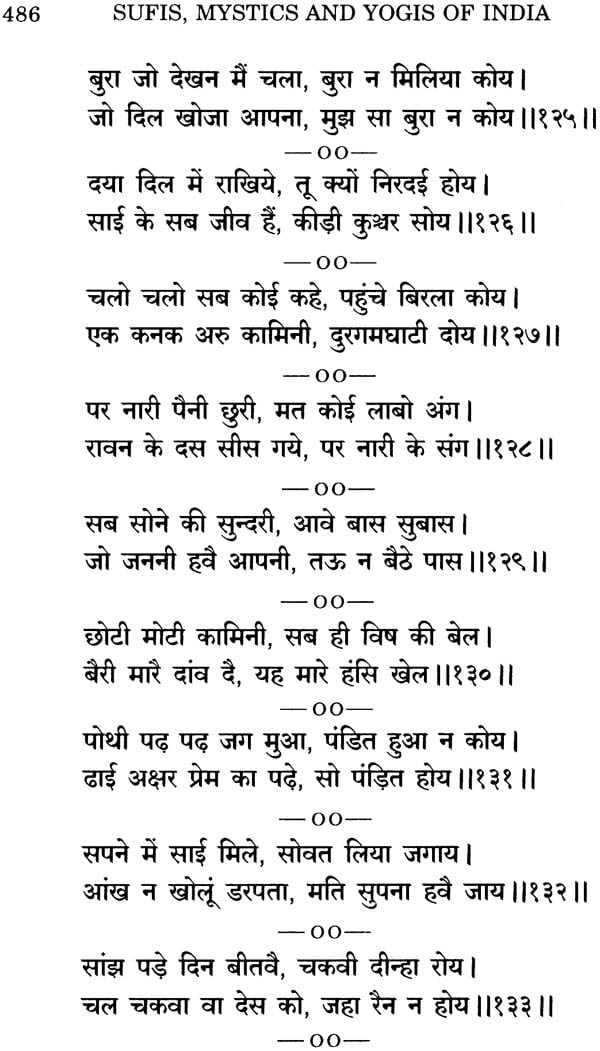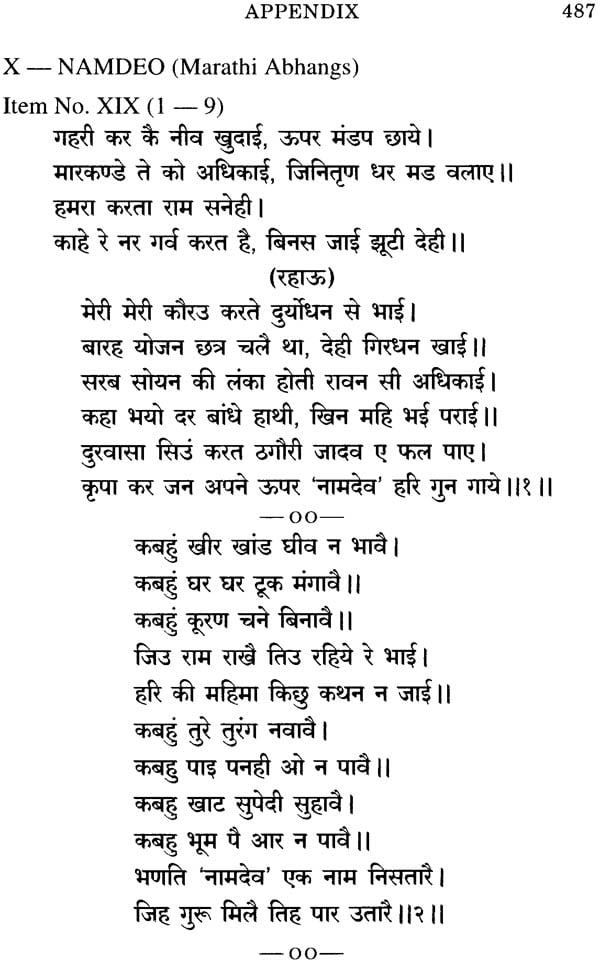
Sufis, Mystics and Yogis of India
Book Specification
| Item Code: | NAN527 |
| Author: | Bankey Behari |
| Publisher: | Bharatiya Vidya Bhavan |
| Language: | English |
| Edition: | 2017 |
| ISBN: | 9788172765576 |
| Pages: | 510 |
| Cover: | Paperback |
| Other Details | 7.0 inch x 5.0 inch |
| Weight | 390 gm |
Book Description
Hailing from Allahabad. Sri Bankey Behari started life as a lawyer as a junior of Dr. K. N. Katju and later practised law independently. He was engaged in the famous Meerut Conspiracy and other Raja Cases. He compiled many law books. Gradually drawn to mysticism. he came into close contact with Mahatma Gandhi, Sri Ramana Maharshi and later Sri J. Krishnamurti and Sri Aurobindo. Finally he gave up every material belonging and became a sannyasin.
For eight years he went into isolation. observed vow of silence. studied, wrote and contemplated on all that is best in all religions including Christianity and Sufism. But the Gita and the Bhagavata attracted him most. As a result of sixteen years' work on the Gita, he wrote a commentary on it which won him a Doctorate in Theology.
From 1940, he was an inmate of Brindaban practising intense sadhana at the feet of a realised soul. Sankirtan and the Gita were his guide-posts and his goal in life was to see Lord Radha-Krishna face to face. "Where then is the place for my photograph in my life?" he asked.
Sri Bankey Behari passed away in 1975.
Preface
The Bharatiya Vidya Bhavan-that Institute of Indian Culture in Bombay-needed a Book University, a series of books which, if read, would serve the purpose of providing higher education. Particular emphasis, however, was to be put on such literature as revealed the deeper impulsions of India. As a first step, it was decided to bring out in English 100 Books, 50 of which were to be taken in hand, almost at once.
It is our intention to publish the books we select, not only in English but also in the following Indian languages: Hindi, Bengali, Gujarati, Marathi, Tamil, Telugu, Kannada and Malayalam.
This scheme, involving the publication of 900 volumes, requires ample funds and an all-India organisation. The Bhavan is exerting its utmost to supply them.
The objectives for which the Bhavan stands are the reintegration of Indian culture in the light of modern knowledge and to suit our present -day needs and the resuscitation of its fundamental values in their pristine vigour.
Let me make our goal more explicit:
We seek the dignity of man, which necessarily implies the creation of social conditions which would allow him freedom to evolve along the lines of his own temperament and capacities; we seek the harmony of individual efforts and social relations, not in any makeshift way, but within the framework of the Moral Order; we seek the creative art of life, by the alchemy of which human limitations are progressively transmuted, so that man may become the instrument of God, and is able to see Him in all and all in Him.
The world, we feel, is too much with us. Nothing would uplift or inspire us so much as the beauty and aspiration which such books can teach.
In this series.. therefore, the literature of India, ancient and modern, will be published in a form easily accessible to all. Books in other literatures of the world, if they illustrate the principles we stand for, will also be included.
This common pool of literature, it is hoped, will enable the reader, eastern or western, to understand and appreciate currents of world thought, as also the movements of the mind in India which, though they flow through different linguistic channels, have a common urge and aspiration.
Fittingly, the Book University's first venture is the Mahabharata, summarised by one of the greatest living Indians, C. Rajagopalachari; the second work is on a section of it, the Gita, by H. V. Divatia, an eminent jurist and student of philosophy. Centuries ago, it was proclaimed of the Mahabharata: "What is not in it, is nowhere." After twenty five centuries, we can use the same words about it. He who knows it not, knows not the heights and depths of the soul: he misses the trials and tragedy and the beauty and grandeur of life.
The Mahabharata is not a mere epic: it is a romance, telling the tale of heroic men and women and of some who were divine; it is a whole literature in itself, containing a code of life, a philosophy of social and ethical relations, and speculative thought on human problems that is hard to rival: but, above all, it has for its core the Gita, which is, as the world is beginning to find out, the noblest of scriptures and the grandest of sagas in which the climax is reached in the wondrous Apocalypse in the Eleventh Canto.
Through such books alone the harmonies underlying true culture, I am convinced, will one day reconcile the disorders of modern life.
I thank all those who have helped to make this new branch of the Bhavan's activity successful.
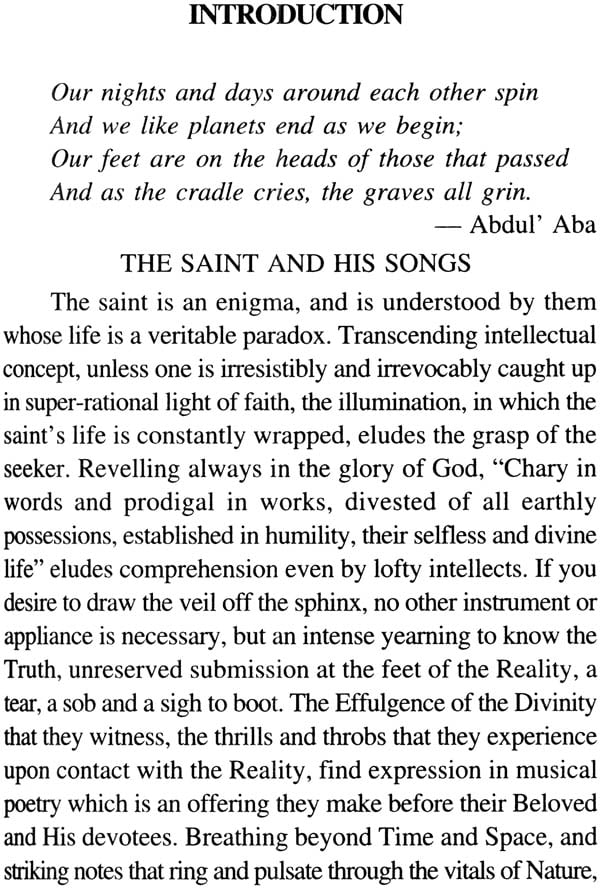
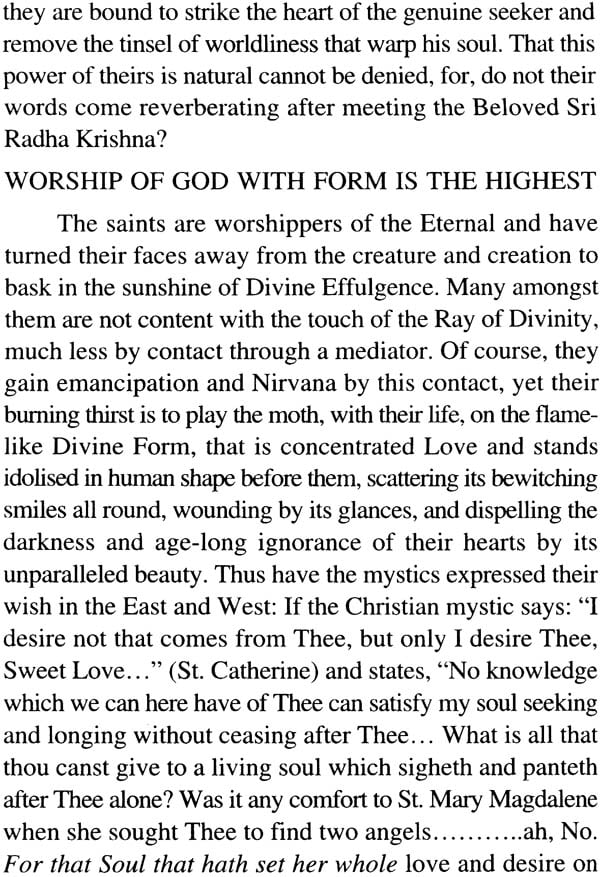
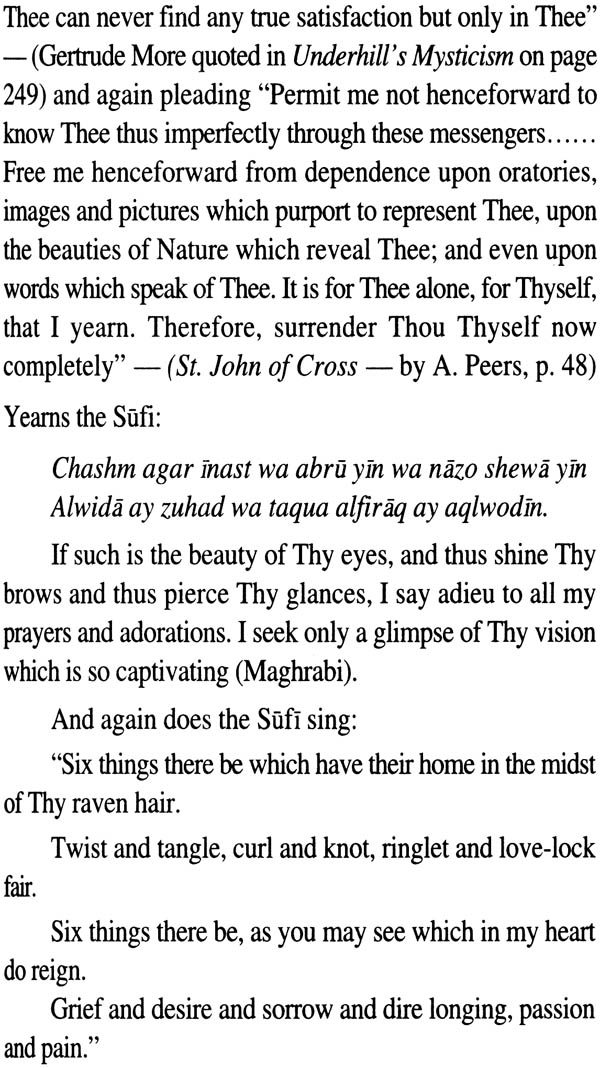
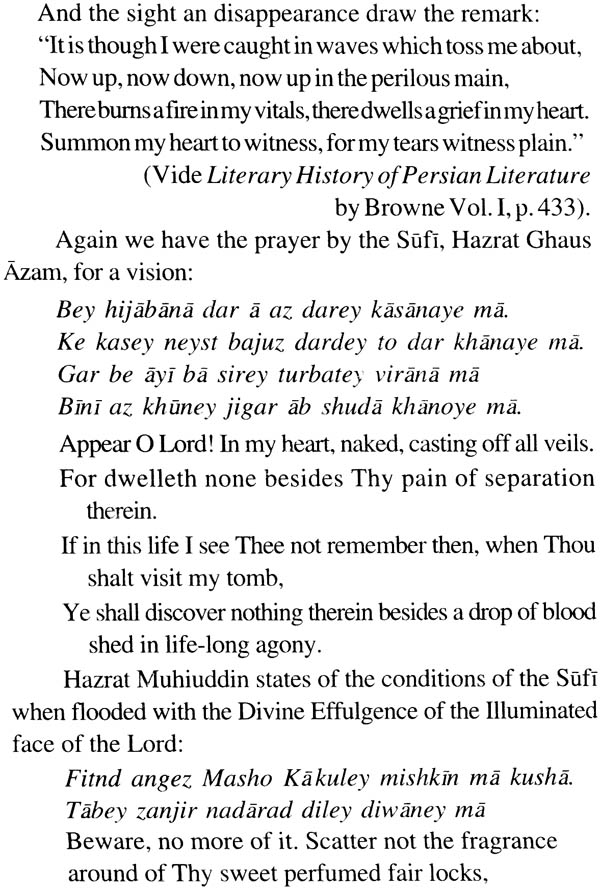
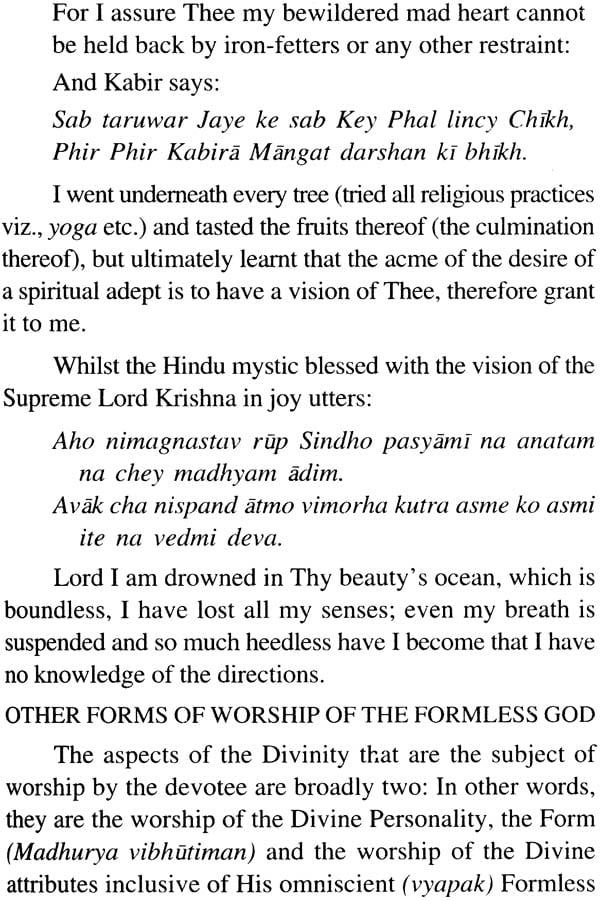
| Kulapati's Preface | V | |
| Part - I | ||
| SUFI - SAINTS | ||
| Introduction | 1 | |
| Acknowledgement | 122 | |
| I. | Baba Farid | 125 |
| II. | Sarmad | 136 |
| III. | Bullah Shah | 155 |
| IV. | Shah Latif | 182 |
| V. | Nazir | 231 |
| Part - II | ||
| ADVAIT-NIRAKAR- YOGIS AND SHABDA MARGIS | ||
| VI. | Shankaracharya | 257 |
| VII. | Gyaneswar | 271 |
| VIII. | Nanak | 280 |
| IX. | Kabir | 300 |
| X. | Namdeva | 347 |
| XI. | Saint Ramadas | 358 |
| Addenda | 372 | |
| Appendix | 377 | |
| Bibliography | 492 |
Sample Pages
